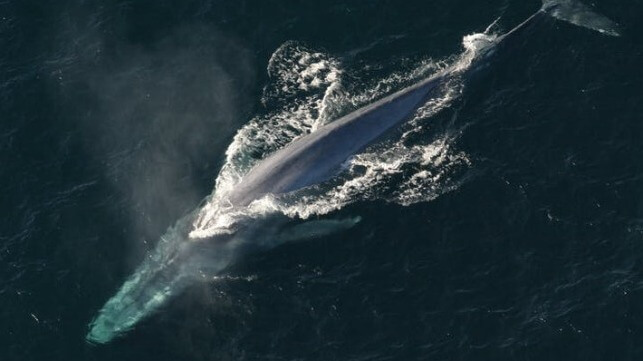It's Time Shipping Companies Leverage Technology to Save Whales

 Scientists believe more than 80 whales are killed by ship collisions every year off the United States’ Pacific coast. According to Whale Safe, 2018, 2019, and 2021 were the worst years for collisions in the area. And as vessel traffic and congestion continue to rise, the future does not bode well for the whales. Yet, it does not have to be this way – many incidents are avoidable and we can charter a new course in maritime whale safety.
Scientists believe more than 80 whales are killed by ship collisions every year off the United States’ Pacific coast. According to Whale Safe, 2018, 2019, and 2021 were the worst years for collisions in the area. And as vessel traffic and congestion continue to rise, the future does not bode well for the whales. Yet, it does not have to be this way – many incidents are avoidable and we can charter a new course in maritime whale safety.
Vessel strikes frequently figure as a top human cause of large whale mortality. As shipping pushes into and through marine habitats, the instances of documented vessel strikes continue to climb and, in some areas, these collisions could be 25 percent more frequent than actually reported.
Already overwhelmed with visual and auditory information in the wheelhouse, many seafarers have difficulty spotting aquatic mammals. One of the reasons for this is that dolphins and whales spend much of their time just below the surface. This is further exacerbated by increased ship-based travel and fast passenger ferries transiting through coastal areas frequented by marine mammals. And vessels traveling at higher speeds have less reaction time. All this increases the likelihood that a vessel may strike and kill one of these animals.
Slow and steady
Current efforts primarily focus on addressing speed reduction measures. As data on marine strikes are collected, the information is used to create virtual boundaries around specific zones with a high potential for collision. Speed reduction, typically limited to 10 knots, is then enforced within those zones. Increased watch-standing measures can then be implemented by sight, improving the opportunities for crew members to implement avoidance procedures and evasive maneuvers.
Voluntary vessel speed reductions (VSRs) implemented in the early 2000s in specific high-traffic zones (both whale and vessel) off of the US coast, have seen only a marginal effectiveness of zero to five percent mortality reduction. This is due, in part, to limited compliance with the VSR request. However, a 95 percent compliance rate would see only limited improvement, boasting an estimated 29 percent reduction at best.
The use of existing tools to aid in collision avoidance is largely limited to radar use. This legacy technology, which relies on radio reflections, is limited in its effectiveness due to the marine mammals being mostly or totally submerged. Equipment settings need to be carefully dialed in to result in any forewarning, and the signals received can be easily mistaken as wave reflections.
The key: Better automatic detection capabilities
Despite the introduction of special areas, speed limits, and educational campaigns, existing efforts to curb marine mammal strikes are limited in their effectiveness and numbers keep rising. The logical solution is to increase monitoring and avoidance efforts and not categorically reduce speed and hope to be able to identify whales. So, how can this be done without adding an increased cognitive burden on the already stretched-thin bridge officers and lookouts?
Machine vision paired with artificial intelligence can learn to see and identify marine mammals and provide warning in time to avoid collisions. The beauty of a solution like this is that it can be running vigilantly while the navigator focuses on the other responsibilities required in running a ship.

One of the solutions exist today, is Orca AI's situational awareness platform, which includes high-resolution cameras, with state-of-the-art computer vision detection, trained on hundreds of thousands of samples, combined with location and can identify and alert targets as small as 2 meters, from as far as 2 NM in good visibility conditions. This type of detection, alongside camera-based distance estimation, can create the adequate alarm time needed to react - either alter course or reduce speed and let the mammals pass safely.
As we push deeper into the sea mammals' zone, it’s our responsibility to come up with creative solutions to reduce any harm. Pairing man and machine increases navigational safety across the board and benefits the commercial operation and marine mammals alike.
Dor Raviv is an accomplished skipper, AI algorithms engineer, and maritime navigation instructor. Led autonomous ship projects and managed multidisciplinary teams in top AI startups. Dor is currently responsible for leading Orca AI’s cutting-edge technology and products. Dor holds a B.Sc in Industrial Engineering and management, specializing in deep learning pipelines and data science.
This article is sponsored by Orca AI. For more information, please visit https://www.orca-ai.io/.
The opinions expressed herein are the author's and not necessarily those of The Maritime Executive.
